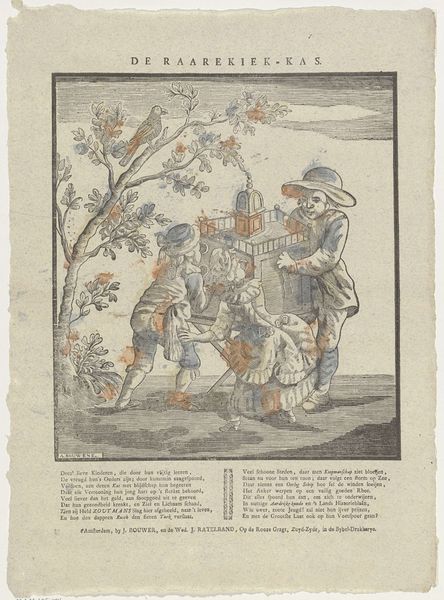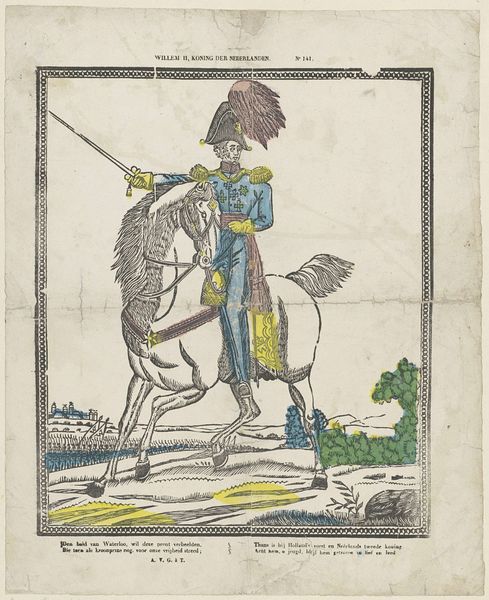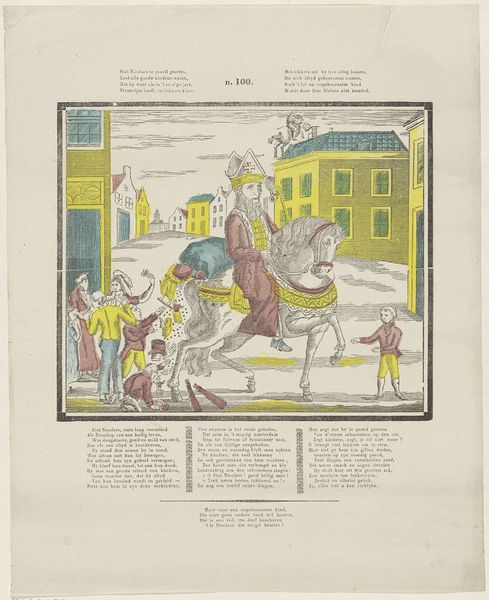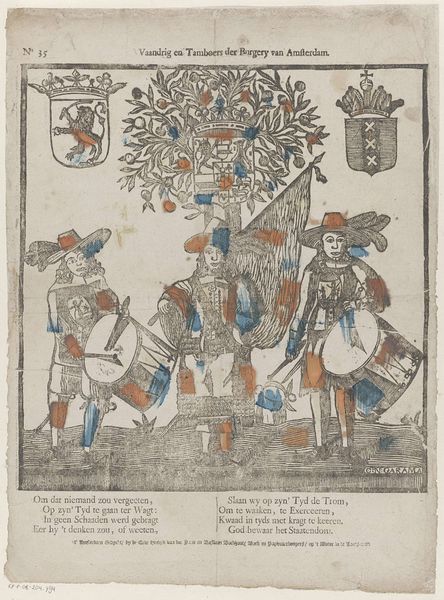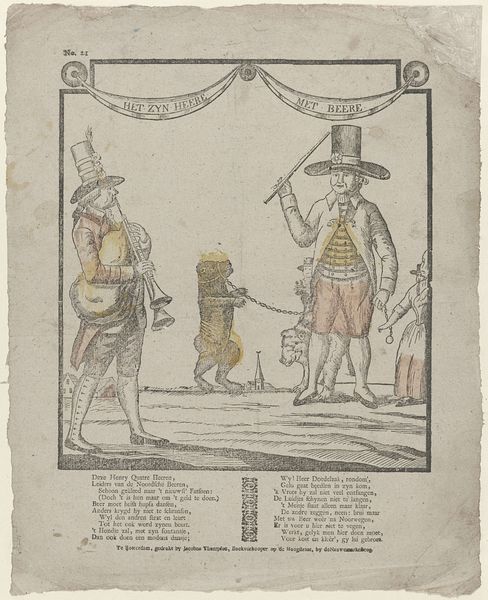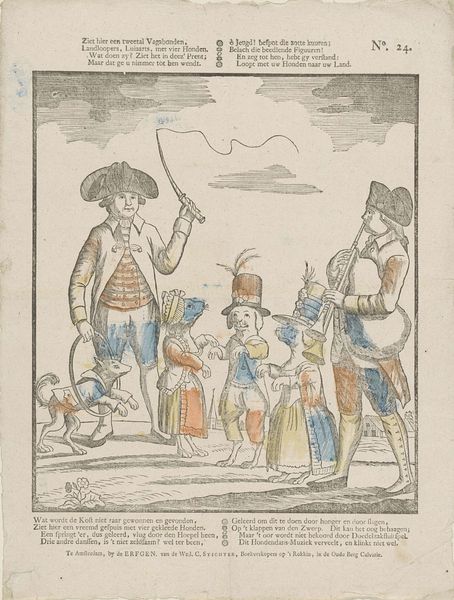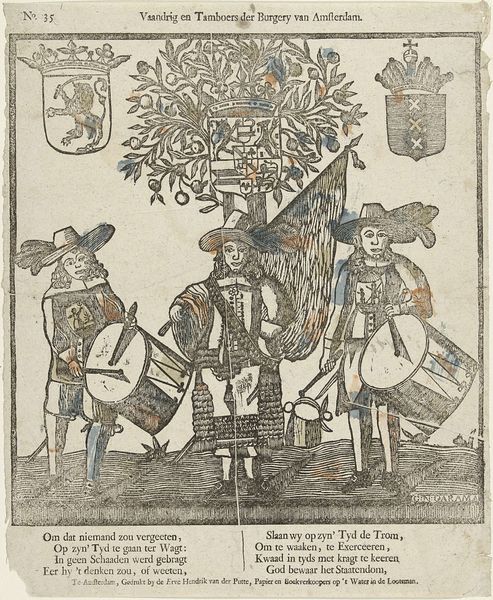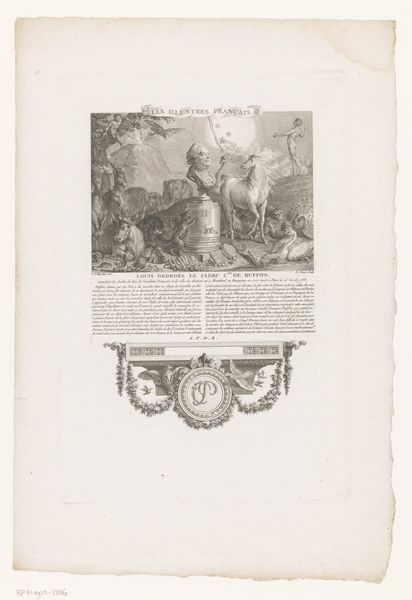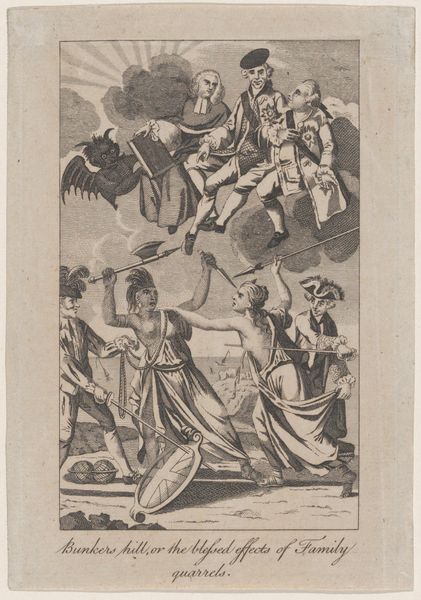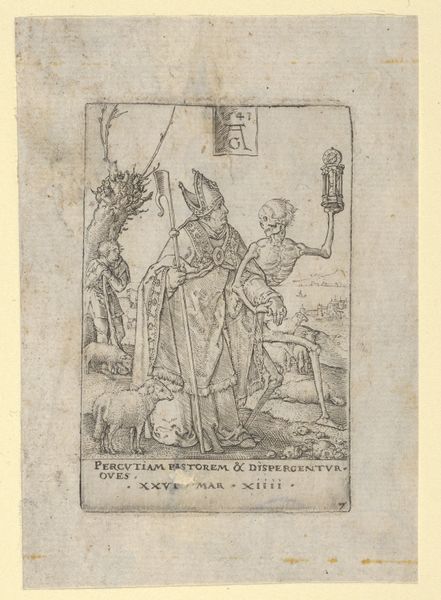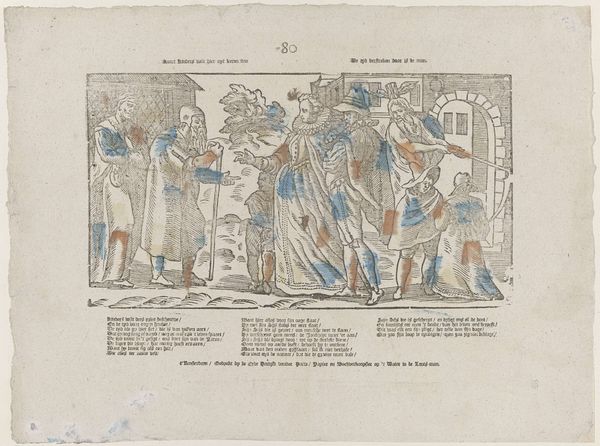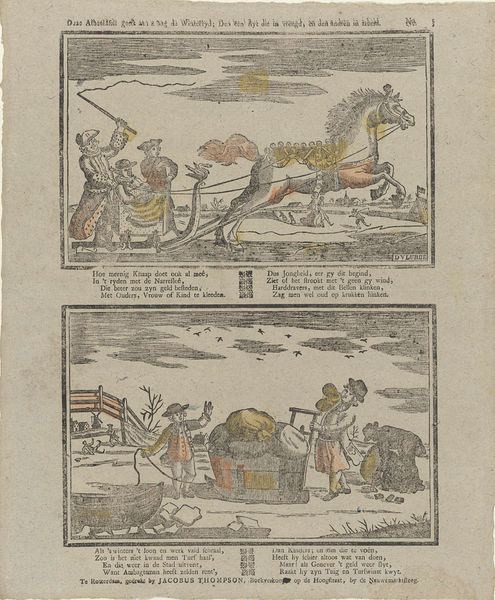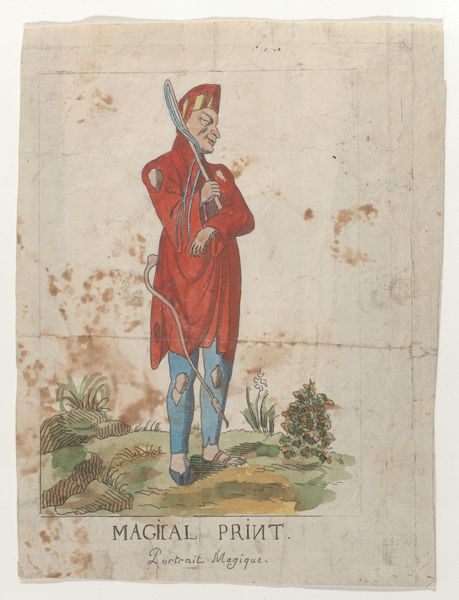
Het waer afbeéldsel van den wandelenden- / jood gelyk hy doór brussel trekkende, is / te zien geweést op den 22 april 1774. / Le vrai portrait du juif-errant, tel qu'on / l'a vu passer à Bruxelles en brabant, le 22 / Avril 1774 1800 - 1833
0:00
0:00
graphic-art, print, etching, paper, engraving
#
portrait
#
graphic-art
#
narrative-art
# print
#
etching
#
caricature
#
paper
#
folk-art
#
watercolour illustration
#
genre-painting
#
engraving
Dimensions: height 422 mm, width 333 mm
Copyright: Rijks Museum: Open Domain
Editor: This engraving from somewhere between 1800 and 1833 by Philippus Jacobus Brepols, titled "Het waer afbeéldsel van den wandelenden- / jood gelyk hy doór brussel trekkende..." or, "The true portrait of the wandering Jew, as he was seen passing through Brussels...", has a strange illustrative style. It feels very much like folk art with its flat perspective and overlaid text. What stands out to you about this work? Curator: Well, looking at this piece through a materialist lens, I'm immediately drawn to the means of its production. It's an engraving, likely printed on inexpensive paper, suggesting a wide intended distribution. Think about the labor involved, the physical act of carving those lines into the plate, the repetitive process of printing. How does that repetitive, almost mechanical process affect our understanding of the image? Editor: It makes it feel more accessible, less like high art and more like something for the masses. Almost like a newspaper cartoon. Curator: Precisely! Consider the social context. This print depicts a popular legend, “The Wandering Jew." What does the artist's choice of printmaking, a relatively accessible medium, say about the story's intended audience and its circulation within society? Is it critiquing or celebrating the narrative? Editor: I hadn’t thought about it that way, as a commentary through material means. The fact that it’s made for mass consumption changes everything. It turns folk legend into a commodity. Curator: Exactly. The print itself becomes part of the narrative, actively participating in the dissemination and consumption of this myth. What we are left with, then, is a manufactured representation of an ancient tale. Editor: That's fascinating! I initially saw it as just a quaint folk image, but understanding the materiality makes me see it as an early form of mass media influencing public perception.
Comments
No comments
Be the first to comment and join the conversation on the ultimate creative platform.
